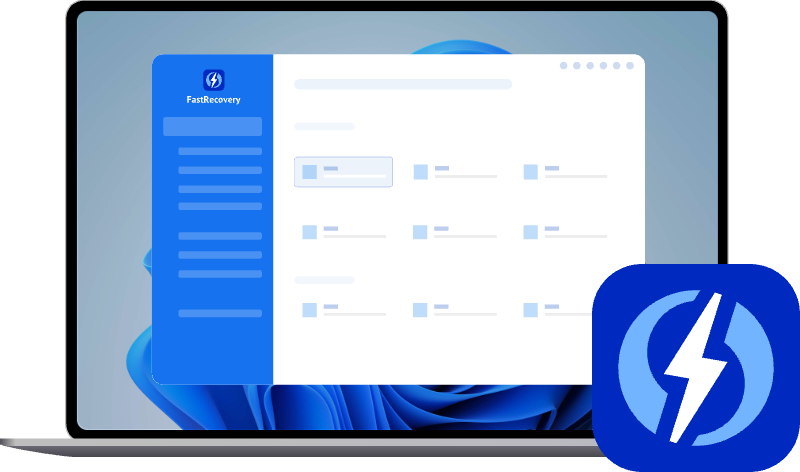Undo Quick Format: Recover Data a Formatted Hard Drive
Can you undo a formatted hard drive? It's a question worth exploring. Learn more, get the answer, and 3 test options for recovering data after a quick format.
Can you undo a formatted hard drive?
“Is it possible to undo a format? We did one without backing up files from my hard drive that I required. Is it possible to reverse this? Please assist.” – Microsoft community
If you are referring to recovering deleted data from a formatted hard disk, then the answer is yes in most cases, but it requires some proven methods. To understand it better, you need to learn more about quick format vs. full format.
😁Quick Format (Default): only deletes the journaling part of the file system while performing a quick format, and lays a new, simple, and blank file system on top, making the quickly formatted data recoverable.
😒Full Format: only writes the file system structure blocks and completely erases data on the formatted hard drive, rendering data unrecoverable, even with professional data recovery software. includes an additional step to scan for bad sectors.
How to recover data from a quick formatted hard drive
2 methods of how to undo a format on a hard drive without backup are given in this part. You need to start data recovery as soon as possible because data overwriting is risky.
-
Don't add new files or continue using your drive.
-
Don't format this disk again.
-
Disconnect SSD immediately (if it is) as it may have the TRIM feature enabled.
Option 1. Recover data after quick format via data recovery tool
The first choice for recovering data from a quick formatted hard drive is using simple but powerful data recovery software - AOMEI FastRecovery. With its clean interface and strong technologies, you can recover data after quick format in only 3 steps.

- Two crucial scanning algorithms: scan a formatted disk quickly and thoroughly for deleted or lost files, laying the basis for a high success rate of data recovery.
- Over 200 types of data: recovering files, from documents (e.g. recover deleted Word) to images, videos, compressed files, emails, etc., up to 200+ formats.
- Highlight features: filter and preview data before undo formatting a hard drive. recover files from hard drive without OS.
- Strong compatibility: recover data from a quick formatted drive with NTFS/FAT32/exFAT/ReFS file systems and support Windows 7/8/10/11 and servers.
Now, FREE download this powerful data recovery software for Windows - AOMEI FastRecovery and install it on your computer.
Step 1. Open AOMEI FastRecovery. Hover the mouse over the drive and click Scan to scan.
Step 2. Then the scanning process will start automatically. It will perform a Quick Format and then Deep Scan for deleted or lost data. Once found any file, it will display them in the following window.
Step 3. You don’t need to wait for the process to complete if you find the data you want to recover. Simply select them and click the Recover xx files button. Please choose a destination path to save the restored data.
To select deleted or lost files, you have two ways in the following:
✦ Through sidebar directories: Expand Deleted files, go to the original location of deleted files, and select them.
✦ Use the file filter feature: Click the Filter feature, displayed as a funnel-shaped button, and select Type > Documents. Then, type the file name or .xlxs in the search box to narrow it down.
-
The x refers to the number of selected files. The total size is also included.
-
Don't save the recovered files to the original location as it may cause data overwriting.
-
You are allowed to recover deleted files during the scanning process.
🔗 You can also use it to recover accidentally deleted data from external hard drive, recover files from virus infected drive, recover files from a dead hard drive, etc., and more scenarios.
Option 2. Perform quick format data recovery via Windows File Recovery
Windows File Recovery is one of the qualified tools released by Microsoft and applies to Windows 10 2004 and later versions. It's a command line tool, more suitable for computer savers, which requires users to learn some necessary parameters before using it including file system, source and destination drive, recovery modes, and switches.
Step 1. Go to This PC > right-click on the formatted hard drive > click Properties. Check the File System.
Step 2. Choose a recovery mode. Extensive is recommended.
| File system | Scenarios | mode |
| NTFS | Deleted recently | Regular |
| NTFS | Deleted for a while | Extensive |
| NTFS | Formatted disk | Extensive |
| NTFS | corrupted disk | Extensive |
| FAT and exFAT | Any | Extensive |
Step 3. Select switches to narrow the scanning range and target your files faster.
| Switches | Meaning | Supported mode(s) |
| /n | Filter the scan range: scans for a specific file with its file name/path/type, etc. | All |
| /y: | Recovers specific extension groups. | Signature |
| /k | Recovers system files. | NTFS Segment |
| /segment | Segment mode; recovers files under NTFS drives using file record segments. | Segment |
| /signature | Signature mode; recovers files under all file system types using file headers. | Signature |
| /u | Recovers undeleted files, for example, from the Recycle Bin. | NTFS Segment |
Step 4. Go to Microsoft Store > click Get to install Windows File Recovery.
Step 5. Run the program > input the command:
winfr source-drive: destination-drive: [/mode] [/switches]
For example, if you need to recover deleted photos from C: drive to D: drive, then the command will be like:
winfr C: D: /n *.png
How to undo formatting a hard drive using backups
If you back up regularly, then you can restore your files after a quick format by restoring them from a backup. The main backup features on Windows are covered here.
Option 1. Retrieve data from formatted hard drive using File History
File History, another tool provided by Windows, helps users backup files to external hard drive automatically and allows you to recover data from formatted hard drive when you realize your files are deleted or lost. Please ensure that it is turned on.
Step 1. Go to Control Panel > System and Security > File History.
Step 2. Click Restore personal files.
Step 3. Select the files you need to recover and then click the Restore button.
Option 2. Undo quick format with Backup & Restore
Backup and Restore was the primary backup utility in Windows 7 and earlier. Although File History has since replaced it, it is still available in subsequent versions of Windows, not only for backward compatibility, but also because it is still used by many as a reliable way to back up their data.
Step 1. Start Control Panel > System and Security > Backup and Restore (Windows 7).
Step 2. Click Restore my files.
Step 3. Click Browse for files/folders > select the files you need > Next.
Step 4. Specify the destination according to your preferences > click Restore.
Option 3. Undo a format hard drive through OneDrive
If you've ever backed up your files to OneDrive, you can get them back when the drive is formatted with a OneDrive backup.
With signing into your Microsoft account, you can visit, share, and download your files on any device you like.
>> Sign in to the OneDrive website with your Microsoft account > choose the files or folders you need > click the 3-dot menu icon > Choose Download in the drop-down menu.
How to prevent data loss from a formatted disk
If you have a backup of the hard drive, then the method of how to undo formatting a hard drive would be easier. You can directly restore files from the backup. Here we recommend the professional data backup software for Windows - AOMEI Backupper Standard to help you out.
- Multiple backup methods. It supports disk, system, partition, file, and more backups. To protect data on a formatted disk, you can select backup the entire disk or individual files based on your needs.
- Automatic backup. You can select one of its daily, weekly, or monthly schedule backup options to run it automatically.
- Incremental backup. This software offers incremental backup in a scheduled task by default, which only backs up changes made since the last backup.
- Other practical tools. You can create bootable media using a CD or USB disk so that, even if your system fails, you can still start your PC from the bootable media and access your backup hard drive.
Step 1. Download, install, and launch free Windows data backup software - AOMEI Backupper Standard on your computer.
Step 2. Under the Backup tab, select the Disk Backup option.
Step 3. Click Add Disk to choose the disk you want to backup and then select a new location to save data on the disk. You can also change the Task Name here to help you distinguish it from other backup taks.
Step 4. Click Schedule Backup and select Daily, Weekly, or Monthly backup. Among them, the shortest backup interval is hourly.
Step 5. Click Start Backup to carry out disk backup and wait until the operation is complete. Click Finish to exit the interface.
Conclusion
Can you undo a formatted hard drive? This post primarily introduces 3 methods of how to undo a formatted hard drive. Please make sure that you have committed a quick format instead of a full format before trying the mentioned methods. Also, always making a backup of your hard drive using AOMEI Backupper is a good way to avoid data loss.
FAQs
1. Does formatting hard drive permanently delete?
Whether formatting a hard drive permanently deletes data on it depends on the format method you use. A quick format only deletes the reference path of files, leaving a data recovery chance while full format overwrites data as it is formatted.
2. Does formatting damaged hard disk?
Formatting a proven way to repartition hard drive and return it to a good state. So it will not damage your disk.
3. How do I format my hard drive back to normal?
The fastest way to format a hard drive is in File Explorer. Just open it and follow the steps below:
- Open File Explorer. Right-click the disk you want to format and select Format.
- Be sure the Quick Format is checked as it leaves you a chance to undo formatting a hard drive.
- Then, click OK. It will start a quick format automatically.
4. How do I undo formatting a hard drive without software?
Windows comes with different backup software, such as Backup and Restore (Windows 7) to help you. Try it if you create a copy of your files with it,
- Go to Control Panel> System and Security and select Backup and Restore (Windows 7).
- Then, click Restore my files.
- Click the Search…, Browse for files, and Browse for folders options to find your deleted files or folders.
- Select a new location to restore your files and then click Restore to undo formatting a hard drive without software.
5. How to recover a formatted external hard drive
If you saved your data on the external hard drive to OneDrive, log in to your account and restore from it.
- Open a web browser and go to https://onedrive.live.com/.
- Sign in to your Microsoft account.
- Search the deleted files in OneDrive. Select and click Download to restore them locally.
- You can also check the Recycle Bin directory in OneDrive.

